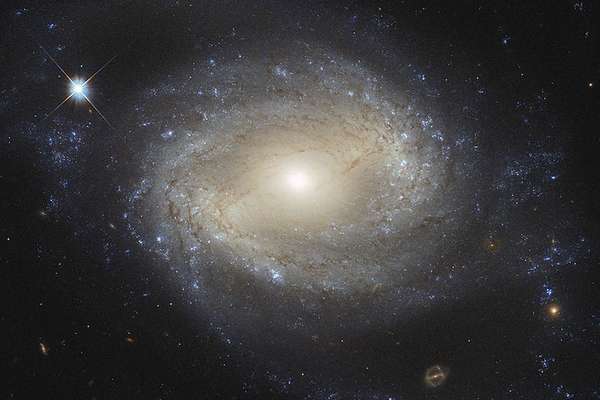Scientists have been able to measure precisely the mass of a supermassive black hole at the heart of the galaxy called NGC 1332, roughly 73 million light years away from Earth. The findings suggest the black hole has a mass 660 million times greater than the mass of the sun, but, most importantly, also provide a proof of concept for a new method to measure black holes with a degree of precision unavailable without ALMA.
"For a precise measurement, we need to zoom in to the very center of a galaxy where the black hole`s gravitational pull is the dominant force. ALMA is a fantastic new tool for carrying out these observations," lead author Aaron Barth, a professor at the University of California, Irvine, said in a press release about the research, published Thursday in the journal The Astrophysical Journal Letters.
Recommended: How much do you know about the space race? Take our quiz
Scientists were able to examine the far-away black hole through a different type of telescope, the Atacama Large Millimeter/submillimeter Array (ALMA). Located high up in the deserts of Chile, ALMA possess an array of more than 60 antennas capable of observing space in the millimeter and submillimeter wavelengths.
Dark gas and dust that would be invisible to other observation centers shine brightly for ALMA. And when it comes to measuring black holes, being able to see gas and dust matters.
Black holes are known to be able to absorb nearly anything around them, but "it does not act like a cosmic vacuum cleaner," Rutgers University associate professor Andrew J. Baker, a member of the team behind the research, told Phys.org.
Stars, gas, and other materials around a black hole are able to stay in orbit if they are moving fast enough. To calculate the mass of the black hole, scientists need to know the speed of those objects in orbit.
A giant disc of cold gas orbits the black hole in NGC 1332. Although typically invisible, the disc shines with carbon monoxide emissions when seen with ALMA, letting scientists determine its orbit speed, and then the mass of the black hole: 660 million times that of the sun. The calculation has a measurement uncertainty of around 10 percent, the most accurate measurement taken yet.
Previous measurements of black holes have primarily been taken with the Hubble Space Telescope, based on observations of hotter disks of gas, according to the UCI press release. The hotter gas was more tumultuous and chaotic, which increased the measurements` uncertainty.
ALMA, however, has a "powerful capability to determine the masses of supermassive black holes by resolving gas kinematics on small angular scales in galaxy nuclei," as Dr. Barth wrote in the study.
NGC 1332 isn`t the only galaxy with a black hole at its heart. Scientists believe one is swirling at the center of every galaxy, including the Milky Way.
Being able to measure the mass of black holes allow scientists to better understand how they grow, change, and shape the universe around them. It provides a better understanding about the forces shaping our own solar system, Baker told Phys.org.
"This observation demonstrates a technique that can be applied to many other galaxies to measure the masses of supermassive black holes to remarkable precision," UCI graduate student and co-author Benjamin Boizelle said in the press release.
More about:
















































